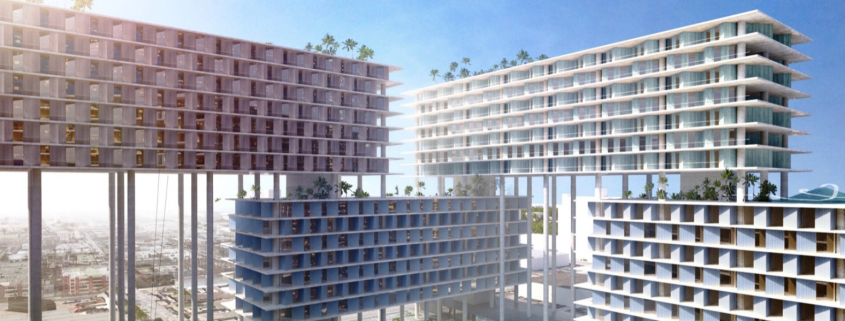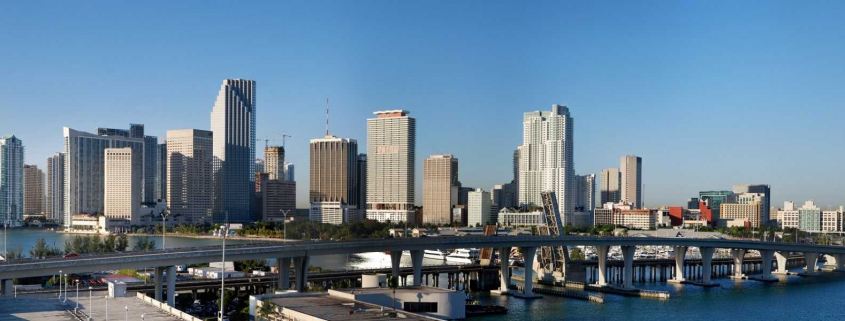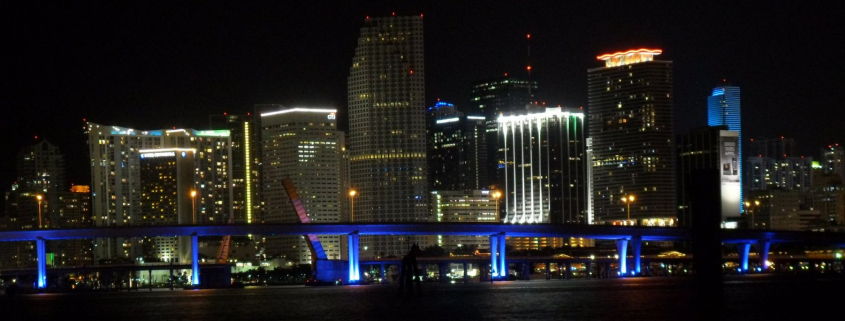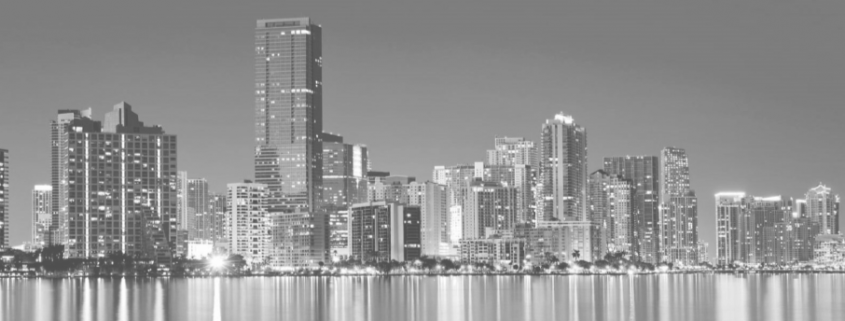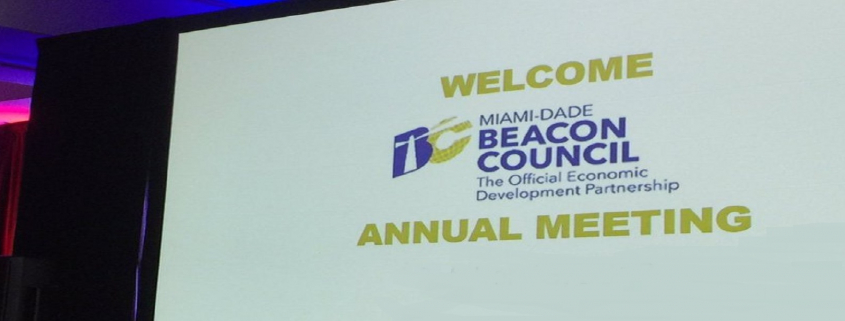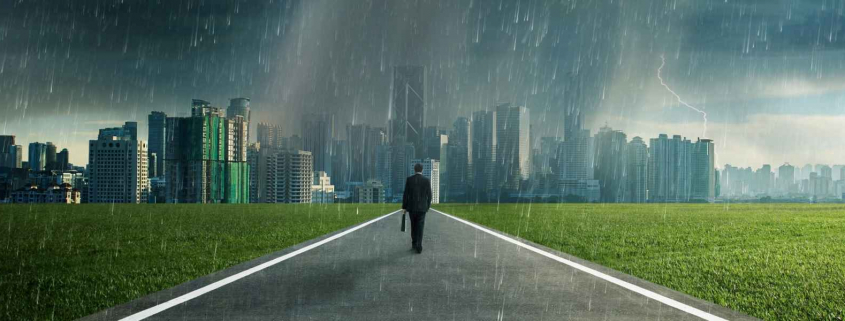Whereas some scientific fashions predict sufficient polar ice soften to convey no less than 10 ft of sea stage rise to South Florida by 2100, only a modest 12 inches would make 15% of Miami uninhabitable, and far of that beachside property is amongst America’s most beneficial.
Even now, as extra frequent “king tides” bubble up via Florida’s porous limestone, pushing fish via sewers and onto streets, residents are changing into extra conscious that their metropolis is constructed on the rippling cabinets, ridges and canyons of a fossil seabed.
“Water is just going again to the identical locations it flowed ages in the past,” says Sam Purkis, Chair of the College of Miami’s Geosciences Division. “The irony is what occurred 125,000 years in the past goes to dictate what occurs to your own home now.”
The fickle undulations between metropolis blocks might imply the distinction between survival and retreat, and the rising price of altitude is sparking a noticeable shift in neighborhood activism and municipal budgets.
Miami Seaside is spending hundreds of thousands elevating roads, upgrading pumps and altering constructing codes to permit residents to lift their mansions by 5 ft. However in working-class, immigrant neighborhoods like Little Haiti, year-to-year sea stage rise will get misplaced within the day-to-day wrestle, and most had no concept that they dwell a lofty three ft increased than the rich of us on Miami Seaside.
They came upon when builders began calling, from all over the place.
“They have been calling from China, from Venezuela. Coming right here with circumstances of cash!” says Marleine Bastien, a neighborhood organizer and longtime resident. “We used to assume that the attract of Little Haiti was the truth that it is near downtown, near each airports and near the seashore. Unbeknownst to us, it is as a result of we are positioned at the next altitude.”
Mentioning a row of vacant outlets, she ticks off the names of a dozen small enterprise homeowners she says have been compelled out by rising rents, and lists others who she says unwittingly took lowball presents with no understanding of Miami’s housing disaster.
“In case you promote your private home in Little Haiti, you assume that you simply’re making a giant deal, and it is solely after you promote, and then you definately understand, ‘Oh, I can’t purchase anyplace else.’”
After her neighborhood middle and day faculty have been priced out of three totally different buildings, she caught wind of plans to construct the sprawling $1 billion Magic Metropolis growth on the sting of Little Haiti, that includes a promenade, high-end retail shops, high rise residences and imagined by a consortium of native buyers, together with the founding father of Cirque du Soleil.
Magic Metropolis builders insist that they picked the location based mostly on location, not elevation. They promised to protect the soul of Little Haiti and provides $31 million to the neighborhood for inexpensive housing and different applications, but it surely wasn’t sufficient for Bastien.
“This can be a plan to really erase Little Haiti,” Bastien says. “As a result of that is the one place the place immigration and local weather gentrification collide.”
She fought the event with all of the protesters and hand-lettered indicators she might muster, however after a debate that went till 1 a.m., commissioners authorised the allow with a Three-Zero vote on the finish of June.
“The world we took was all industrial,” says Max Sklar, VP with Plaza Fairness Companions and a member of the event staff. “There was no actual thriving financial system round these warehouses or vacant land. And so our objective is to create that financial system. Can we appease all people? Not 100%, that is not possible. It is not sensible. However we have listened to them.”
He repeats a promise to ship $6 million to a Little Haiti neighborhood belief earlier than ground is even damaged and, as an indication that he listened to no less than one demand, acknowledges that the advanced will now be known as Magic Metropolis Little Haiti.
However whereas Bastien mourns the defeat, her neighbor and fellow organizer Leonie Hermantin welcomes the funding and hopes for the perfect.
“Even when Magic Metropolis didn’t come immediately, the tempo of gentrification is so speedy that our folks won’t be able to afford houses right here anyhow,” Bastien says with a resigned head shake. “Magic Metropolis is just not the federal government. Reasonably priced housing insurance policies have to return from the federal government.”
“Local weather gentrification is one thing that we are very intently monitoring,” Miami Mayor Francis Suarez tells me. “However we have not seen any direct proof of it but.”
Suarez is the uncommon Republican who passionately argues for local weather mitigation plans and helped champion the $400 million Miami Perpetually bond, authorised by voters to fund motion to guard the town from the ravages of upper seas and stronger storms.
“We really created in our first tranche of Miami Perpetually, a sustainability fund for folks to renovate their houses in order that they’ll keep of their properties somewhat than having to promote their properties,” Suarez says.
However that fund is a comparatively small $15 million, not sufficient to dent a housing disaster that grows with every warmth wave and hurricane, in a metropolis the place over 1 / 4 of residents dwell under the poverty stage.
Philip Alston, the UN Particular Rapporteur on excessive poverty and human rights, mentioned there was already proof of how the local weather disaster impacts the wealthy and poor in a different way. And he identified that these harm most have been seemingly these least accountable.
“Perversely, whereas folks in poverty are accountable for only a fraction of world emissions, they’ll bear the brunt of local weather change, and have the least capability to guard themselves,” Alston wrote final month.
Source: Nosy Media




